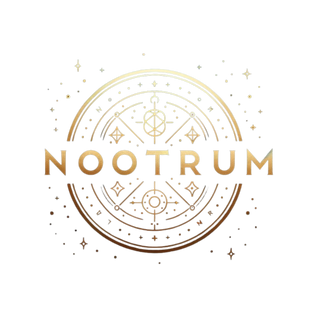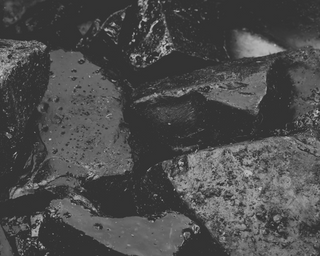Shilajit, a highly regarded substance in traditional medicine systems like Ayurveda, has gained significant attention for its potential health benefits. Derived from the decomposition of plant and organic matter over centuries, Shilajit is rich in minerals, fulvic acid, and other bioactive compounds. It is available in various forms, including resin, solid, and powder.
Do keep in mind that Shilajit itself is functionally the resin. The resin is obtained through a meticulous process of collecting the resin from rocks in mountainous regions, mostly the Himalayas. It’s generally better if it’s collected at higher altitudes, as with most plants the compound balance is effected by weather conditions, temperature etc.
Of course, we’re going to sound a little bit biased as we only sell shilajit resin, but there’s a reason that we’re happy to sell other mushrooms in their powdered or capsule forms, but not shilajit.
As you’d expect there’s a reason we’ve made that choice, and it’s because Shilajit in particular loses a lot of its most beneficial bioactive compounds if it’s powdered. It can be done, but it would drive the price sky high for it to actually maintain the same useful content.
Shilajit Resin
Shilajit resin is the most potent and natural forms of silajit.
Shilajit resin appears as a sticky, tar-like substance and is typically dissolved in water or other beverages before consumption.
The resin form of Shilajit is favored for its purity and potency. It contains a wide spectrum of minerals, fulvic acid, and other plant-based compounds that can potentially offer a range of health benefits. Some of the reported benefits of Shilajit resin include enhanced energy, improved immune function, and support for cognitive health.
Composition and Consistency: Shilajit resin boasts a smooth semi-solid paste consistency, primarily in black and dark brown colors. It contains up to 80% organic and inorganic substances, including a high concentration of fulvic acid, which is crucial for its health benefits.
Usage and Precautions: Shilajit resin is easy to consume, usually dissolved in warm water or milk.
Absorption and Effectiveness: Due to its fulvic acid content, shilajit resin is quickly absorbed by the body, facilitating the efficient transport of nutrients across cell membranes.
Pros of Shilajit Resin:
- The highest concentration of phytochemicals, polysaccharides and fulvic acid.
- Lasts for a longer time.
- No fillers were added.
- Less refinement is required than any other solid form.
Cons of Shilajit Resin:
- Contains a strong flavor.
- It takes some time to get dissolved in warm water completely.
Shilajit Capsules
Shilajit solid, often referred to as "shilajit tablets" or "shilajit capsules," is a more convenient and user-friendly form. It is made by compressing Shilajit resin into solid forms, which are easy to carry and consume. Shilajit solid forms have gained popularity due to their ease of use and standardized dosage.
While solid forms of Shilajit offer the benefits of convenience and consistent dosing, some argue that the manufacturing process might alter the natural composition of the substance, potentially affecting its bioavailability and potency compared to the resin form.
Dosage and Ingredients: Each capsule typically contains between 250-500 mg of shilajit, but it's important to note that some may include additional ingredients
Absorption and Effectiveness: Shilajit powder, used in capsules, undergoes additional processing to achieve a powdered form. Whilst some extracts can maintain potency, most do not. The process includes filtration that may introduce fillers, potentially diluting its potency and reducing fulvic acid levels compared to resin
Pros of Shilajit Solid:
- Does not contain a strong flavor.
- It does not need to dissolve in water and can be consumed quickly and easily.
- Lasts long if stored in a cool and dry place, away from direct sunlight, heat, and oxygen.
- Zero mess involved.
Cons of Shilajit Solid:
- Contains fillers.
- Takes some time to digest.
Shilajit Powder
Shilajit powder is another variant that has gained traction. It is created by grinding down Shilajit resin or solid into a fine powder. The powder form is versatile and can be easily incorporated into various recipes, such as smoothies, teas, or even used as a seasoning for food. However, it's important to note that the powder might not retain the full spectrum of bioactive compounds present in the resin form.
Dosage and Ingredients: Powder generally should be used as a gram or more.
Absorption and Effectiveness: Shilajit powder can make up what it loses in potency by volume, but you’ll still have the same taste issues as if you don’t like shalajit resin.
Pros of Shilajit Powder:
- Gets dissolved easily.
- If stored away from direct sunlight, oxygen, and heat, it lasts for a very long time.
Cons of Shilajit Powder:
- Shilajit Powder has a strong flavor.
- Could be overheated while processing.
Which Form of Shilajit is Better and Why
Potency and Purity: Shilajit resin is the most potent and pure form due to minimal processing.
Convenience: Shilajit solid forms provide convenience in terms of dosage and consumption.
Bioavailability: Shilajit resin has better bioavailability
Realistically the answer is resin, unless you really can’t stand the taste, in which case capsules may be better.
Shilajit FAQ’s
- What is Shilajit? Shilajit is a natural substance that forms from the decomposition of plant material over centuries in the Himalayan and Altai Mountains. It is rich in minerals, fulvic acid, and other organic compounds.
- How is Shilajit consumed? Shilajit can be consumed in various forms, including powder, resin, capsules, or dissolved in water. It is often taken orally, but can also be applied topically for certain purposes.
- What are the common uses of Shilajit? Shilajit is traditionally used in Ayurvedic medicine for a wide range of purposes, including boosting energy, improving cognitive function, enhancing libido, promoting longevity, and supporting overall well-being.
- Does Shilajit have scientific backing? While traditional uses of Shilajit have been documented for centuries, modern scientific research on its effects is still ongoing. Some studies suggest potential benefits, such as antioxidant properties and potential effects on energy metabolism, but more research is needed to confirm its efficacy for various uses.
- Can Shilajit improve athletic performance? Some athletes and fitness enthusiasts believe that Shilajit can enhance stamina and athletic performance. While there is limited scientific evidence to support this claim, anecdotal reports suggest that it may help improve energy levels and recovery after exercise.
- Is Shilajit safe to use? When taken in recommended doses, Shilajit is generally considered safe for most people. However, individuals with certain medical conditions, such as kidney problems or iron overload disorders, should consult a healthcare professional before using Shilajit.
- Are there any potential side effects of Shilajit? Side effects of Shilajit are rare but may include digestive issues, allergic reactions, or interactions with certain medications. It's essential to follow dosage recommendations and monitor for any adverse reactions when using Shilajit.
- Can Shilajit be used for skincare? Some people use Shilajit topically for skincare purposes, believing it can help improve the skin's appearance and texture. However, scientific evidence supporting its efficacy for skincare is limited, and individuals should exercise caution when applying it to the skin.
- How should I choose a quality Shilajit product? When purchasing Shilajit supplements, look for products from reputable brands that undergo rigorous testing for purity and potency. Choose products that contain genuine Shilajit extract without added fillers or contaminants.
- Is Shilajit suitable for everyone? While Shilajit is generally well-tolerated, it may not be suitable for everyone, especially pregnant or breastfeeding women and individuals with certain medical conditions. It's essential to consult with a healthcare professional before starting any new supplement regimen, including Shilajit.
- What type of Shilajit is recommended for muscle growth? For muscle growth, a potent form of Shilajit may be beneficial as it can boost testosterone levels, enhance strength and stamina, and support recovery after workouts. It generally takes about 2-3 months to observe results from using Shilajit for this purpose.

